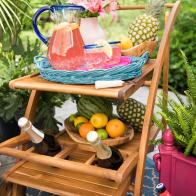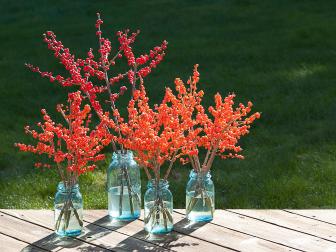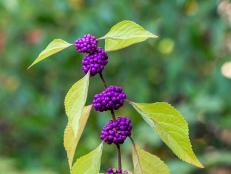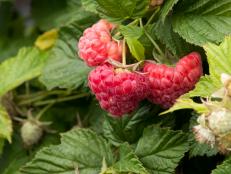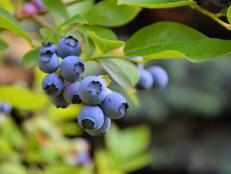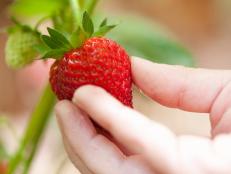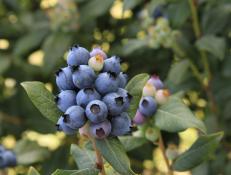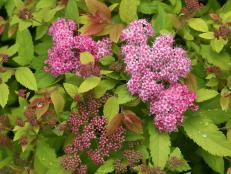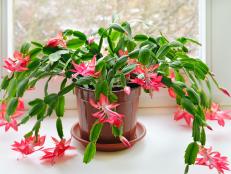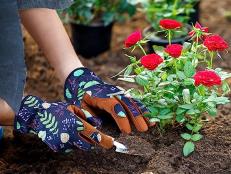Growing Winterberry Holly
Ignite your landscape with winterberry holly. Learn how to grow Ilex verticillata and how to use it in your backyard landscape.
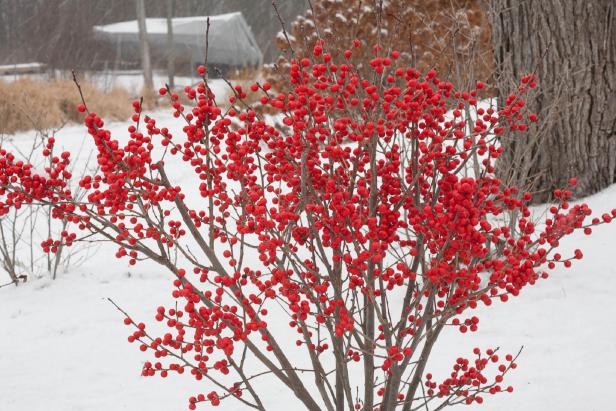
ProvenWinners.com
Berry Poppins winterberry holly
Meet the holly that deserves a spot in every yard: winterberry holly. Botanically known as Ilex verticillata, winterberry holly drops its leaves in late fall to reveal stems covered in bright red — or sometimes gold — berries. It's often referred to as Christmas holly because its berry-bedecked stems make fabulous additions to holiday decor, indoors and out.
Winterberry has a host of names. You might see it sold as winterberry holly, winterberry tree (although it's really a shrub), winterberry bush or just plain winterberry. It's native to North America, growing from eastern Canada, south to Florida and west to Texas. Winterberry is tough as nails, hardy in Zones 3 to 9.
Holiday Decorating With Winterberries 14 Photos
Branches studded with bright red, orange or yellow berries add color to wreaths, swags and vases.
A winterberry plant is slow-growing and forms a multi-stemmed, dense shrub that's usually 5 to 15 feet tall. Left on its own, the native winterberry holly forms small thickets or hedgerows, especially when it's in a swampy spot.
Botanical Name: Ilex verticillata
Common Name: Winterberry holly, Christmas holly, winterberry tree, winterberry bush, winterberry
Hardiness Zones: 3 to 9
Size: 5 to 15 feet tall
Special Features: Beautiful fall and winter berries
Plant breeders have worked with winterberry to produce varieties that offer sizes more suitable to modern yards. Some varieties also form larger berries or more berries than the original native winterberry holly.
Transform your winter scenery with the berried beauty of Ilex verticillata — aka winterberry holly. Learn what you need to know to succeed with this native plant.
Planting Winterberry Holly
When to Plant
Winterberry plants are available for sale at nurseries or garden centers year-round. The best time to plant is just before your region's rainy season. That means autumn or spring planting is ideal for most of the country.
Where to Plant
When planting winterberry, choose a sunny spot where plants receive at least four to six hours of sun each day. Although you can grow a winterberry bush in light shade, stems will likely have fewer flowers, which means fewer berries for your winter show.
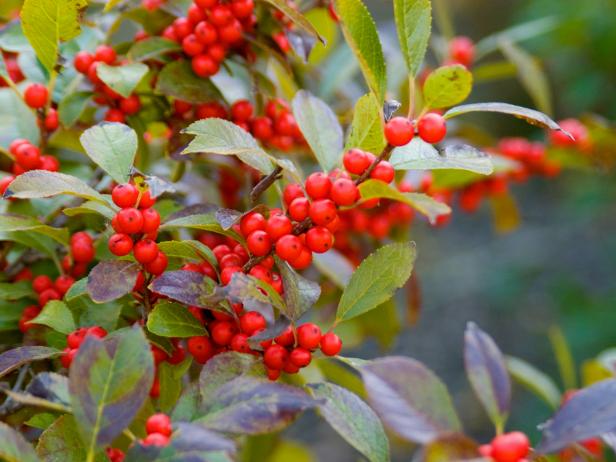
Bailey Nursery
‘Afterglow’ winterberry
Winterberry plants grow best in medium to wet soils, but also tolerate average garden soil well. They grow best in acidic soil and don't thrive in alkaline soil. If you have clay soil, it's a good idea to add organic matter, such as compost or composted manure, to improve soil drainage.
Growing Winterberry Holly
Feeding & Mulching
Winterberry plants thrive in acidic soil. If you want to apply fertilizer annually, choose a fertilizer labeled for acid-loving plants, like Espoma's Holly-Tone. Apply this fertilizer at the start of the growing season, following the instructions on the package.
Mulch beneath your winterberry bushes to maintain soil moisture and help suppress weeds. Use an organic mulch, such as triple shredded bark, pine needles, fir bark fines or whatever is locally available in your region. Apply a 2- to 3-inch-thick layer.
Pruning
Don't prune winterberry right after it blooms, as you may with most other flowering shrubs, because you'll cut off the berry crop for that year.
You can remove dead or damaged branches at any time during the growing season. If you need to prune a plant to remove a wayward stem or reduce the size, do it before the plant starts growing in spring.
Water Needs
In its native habitat, winterberry plants thrive in marshy, moist soil. In your yard, those conditions aren't necessary because once a winterberry bush is established, it can usually survive on regular rainfall in most growing conditions.
If your planting spot has sharp drainage and tends to run on the dry side, it's a good idea to water winterberry plants occasionally. For newly planted winterberry shrubs, water regularly during the first growing season (once a week unless there's an inch of rainfall), until plants have firmly established and are steadily producing new growth.
How to Use Winterberry Holly in Your Landscape
In the landscape, winterberry is versatile and easily fills a number of roles.
- Hedge — Winterberry's multi-stemmed nature makes it an ideal choice for creating a hedge. Plant it along a driveway, fence or stone wall to provide winter interest.
- Foundation planting — Berried stems stand out when planted against a light-colored home or in front of a row of dark evergreens.
- Rain garden — Winterberry withstands both wet and dry soil, making it the perfect addition to the fluctuating moisture levels of rain gardens.
- Cutting garden — Include winterberry if you like creating flower arrangements with natural materials. The berried stems last indoors and out for weeks without water.
- Wildlife garden — Flowers are tiny but attract butterflies and beneficial pollinating insects. Berries lure more than 20 bird species, including cedar waxwing and robin. Birds typically feed on berries in late winter, after other food sources are decimated. The dense branch structure provides good nest sites for birds.
Winterberry Holly: Berry Basics
The most complicated part of growing winterberry holly is making sure you have what you need to get berries. Like all hollies, winterberry comes in male and female forms — and you need both to get berries. Both types flower, but only females form berries.
Plant one male for every four to five females. Insects do the pollinating, so place plants within 50 feet of each other. Different males flower at different times, so do your homework and make sure you're getting the right male to pollinate your holly variety. Common male winterberry hollies include:
- 'Jim Dandy', Mr. Poppins — for early flowering female varieties
- 'Apollo', 'Southern Gentleman' — for late flowering female varieties
Winterberry Holly Varieties
The easiest way to choose a winterberry holly for your yard is to focus on the female plant — its size, berry color and number. The pot tag should list the correct male pollinating partner for the female variety you choose.

ProvenWinners.com
Berry Heavy Gold winterberry holly
Here's a sampling of winterberry varieties that grow well in a typical backyard setting. The main differences between varieties relate to plant size and the number of berries. All plants form red berries unless noted. Pollinating partners (the male plants) are listed in parentheses.
- Winter Gold — 7 feet tall and wide with gold berries ('Southern Gentleman')
- Winter Red — 6 to 9 feet tall and nearly as wide; popular variety for commercial production; stems are long and straight ('Southern Gentleman', 'Apollo')
- Berry Heavy — 6 to 8 feet tall and wide ('Jim Dandy')
- Berry Nice — 6 to 8 feet tall, 3 to 5 feet wide ('Jim Dandy')
- Red Sprite — 3 to 5 feet tall and wide ('Jim Dandy,' 'Apollo')
- Little Goblin Red — 3 to 5 feet tall and wide (Little Goblin Guy)
- Berry Poppins — 3 to 4 feet tall and wide (Mr. Poppins)
- Little Goblin Orange — 3 to 4 feet tall and wide with orange berries (Little Goblin Guy)
Winterberry Holly: Problems
Winterberry plants are usually trouble-free in the landscape — a true low-maintenance shrub. The one problem you may encounter is a lack of berries. Most often berries fail to form because you have the wrong pollinating partner (male plant) for your berry-bearing (female) plant. Other reasons plants may not produce a heavy berry crop include not enough sunlight (too much shade) or drought stress.
Young winterberry shrubs won't have as strong a berry show as mature bushes do. Give your winterberry two to three years to get established in the landscape to reach their full berry potential.

%20Taniya%20Nayak,%20Ty%20Pennington,%20Alison%20Victoria,%20and%20Brian%20and%20Sarah%20Baeumler_BOTB_HGTV%20.jpg.rend.hgtvcom.196.196.suffix/1683310636672.jpeg)


